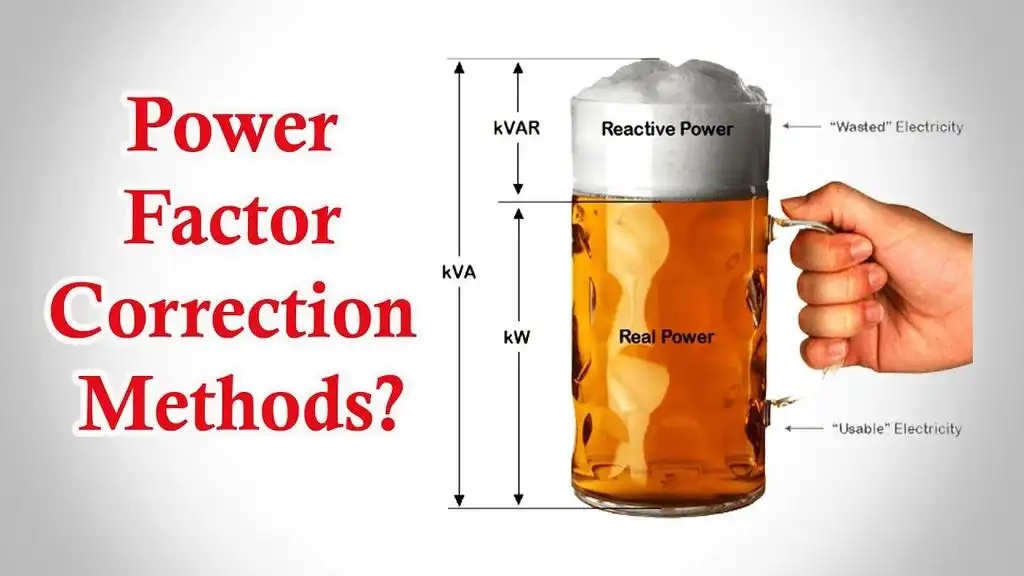How to improve power factor?
What can I do to improve power factor?
You can improve power factor by adding power factor correction capacitors to your plant distribution system. When apparent power (kVA) is greater than working power (kW), the utility must supply the excess reactive current plus the working current. Power capacitors act as reactive current generators. By providing the reactive current, they reduce the total amount of current your system must draw from the utility. 95% power factor provides maximum benefit.
Theoretically, capacitors could provide 100% of needed reactive power. In practical usage, however, power factor correction to approximately 95% provides maximum benefit. The power triangle shows apparent power demands on a system before and after adding capacitors. By installing power capacitors and increasing power factor to 95%, apparent power is reduced from 142 kVA to 105 kVA—a reduction of 35%.

How much can I save by installing power capacitors?
Power capacitors provide many benefits:
- Reduced electric utility bills
- Increased system capacity
- Improved voltage
- Reduced losses
- Reduced utility bills
Your electric utility provides working (kW) and reactive power (kVAR) to your plant in the form of apparent power (kVA). While reactive power (kVAR) doesn’t register on kW demand or kW hour meters, the utility’s transmission and distribution system must be large enough to provide the total power. Utilities have various ways of passing the expense of larger generators, transformers, cables and switches along to you. As shown in the following case histories, capacitors can save you money no matter how your utility provider bills you for power. kVA billing The utility provider measures and bills every ampere of current, including reactive current.
How can I select the right capacitors for my specific application needs?
Once you’ve decided that your facility can benefit from power factor correction, you’ll need to choose the optimum type, size and number of capacitors for your plant.
There are two basic types of capacitor installations:
- Individual capacitors on linear or sinusoidal loads
- Banks of fixed or automatically switched capacitors at the feederor substation.
- Individual vs. banked installations
Advantages of individual capacitors at the load:
- Complete control; capacitors cannot cause problemson the line during light load conditions
- No need for separate switching; motor always operateswith capacitor
- Improved motor performance due to more efficient poweruse and reduced voltage drops
- Motors and capacitors can be easily relocated together
- Easier to select the right capacitor for the load
- Reduced line losses
- Increased system capacity
Advantages of bank installations at the feeder or substation:
- Lower cost per kVAR
- Total plant power factor improved—reduces or eliminates allforms of kVAR charges
- Automatic switching ensures exact amount of power factorcorrection, eliminates over-capacitance and resulting overvoltages



